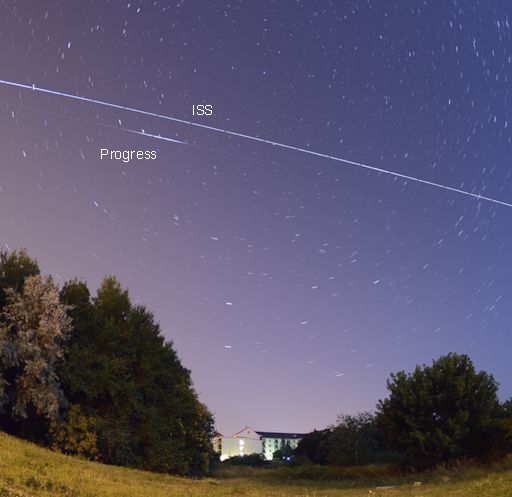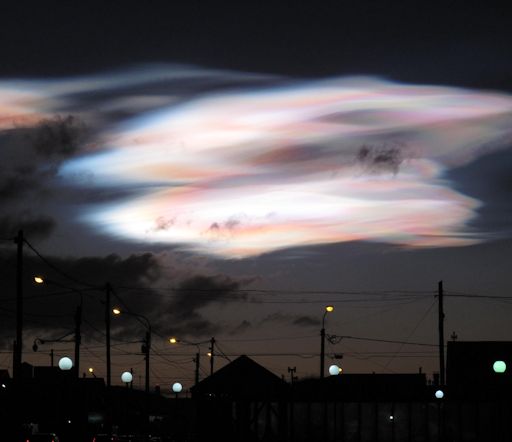Listen to radar echoes from satellites and meteors, live on listener-supported Space Weather Radio. | | |
STORM WARNING CANCELLED: A pair of CMEs launched into space on July 26th by erupting solar filaments will apparently miss Earth. The odds of a geomagnetic storm this weekend are low. Aurora alerts: text, voice.
SPACESUIT REPAIR KIT LAUNCHED, DELIVERED: On Saturday, July 27th, the Russian Space Agency launched a Progress supply ship to the International Space Station. The Progress quickly caught up with the ISS and docked to the outpost, delivering food, fuel, and the last-minute addition of a repair kit for a U.S. spacesuit that malfunctioned during a spacewalk last week. Shortly before docking, Monika Landy-Gyebnar saw the two spaceships fly over her home in Veszprem, Hungary:

"The ISS appeared in the NW sky, glowing brightly," says Landy-Gyebnar. "About 10 seconds later I noticed a very faint dot of light following it - the Progress!"
"At the middle of its route across the sky, the Progress spacecraft produced a very bright flare, even brighter than ISS," she continues. "It was short, but very spectacular. At maximum, the flare's astronomical magntitude was about -5, while the ISS was only -2.5. Other observers from Hungary saw it, too." (The flare was caused by sunlight glinting from a flat surface on the spacecraft.)
"As the spaceships flew on towards the NE horizon, Progress became less and less bright and soon it faded into the sky background," she concludes. "The ISS remained bright until it set. Then I packed my gear and came home to watch the docking on NASA TV."
To view more flybys of the ISS-Progress combo, check Spaceweather.com's Simple Satellite Tracker.
Realtime Space Weather Photo Gallery
NACREOUS CLOUDS OVER TIERRA DEL FUEGO: On July 24th, about an hour after sunset, Gerardo Connon of Rio Grande city in Tierra del Fuego, Argentina, walked outside and witnessed a rare display of nacreous clouds. The colorful apparition was as bright as the street lights in the city below:

These clouds, also known as "mother of pearl clouds," form in the stratosphere far above the usual realm of weather. They are seldom seen, but when they are, the reports usually come from high-northern parts of our planet. This apparition over Tierra del Fuego was unusual indeed.
Atmospheric optics expert Les Cowley explains the special conditions required to create such a cloud: "Take an unusually cold lower stratosphere (15-25km high), use some gravity waves generated by high winds and storms in the troposphere to stir in some water vapour, and -- voilà! You get these clouds made of tiny ice crystals shining after sunset with unforgettably bright iridescent colors."
"The very special conditions make nacreous clouds a rare, high-latitude phenomenon. Scandinavia, Iceland and northern Canada are favourite places to see them. Sightings in the southern hemisphere are even more rare because there is so little land far enough south except for Antarctica."
Realtime Aurora Photo Gallery
Realtime Noctilucent Cloud Photo Gallery
[previous years: 2003, 2004, 2005, 2006, 2007, 2008, 2009, 2011]
Realtime Comet Photo Gallery

